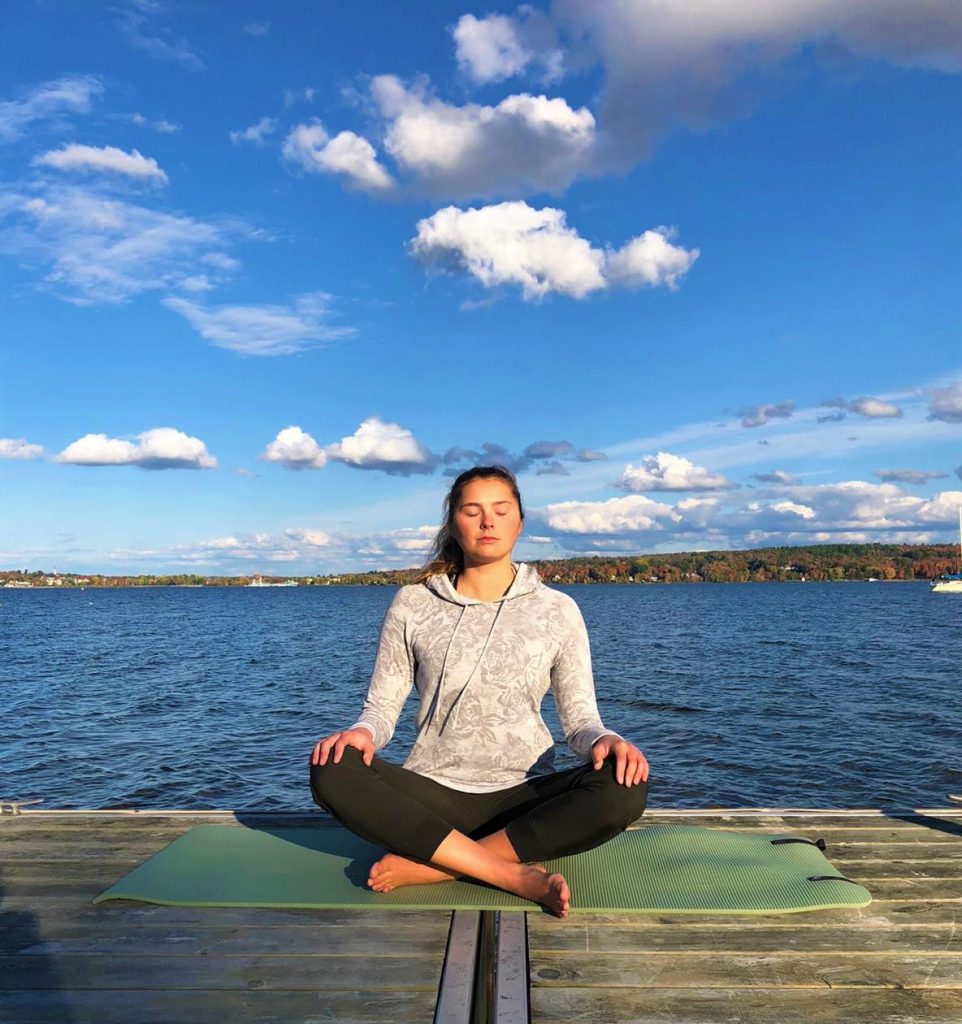Yoga is a type of movement that allows the mind, body, and spirit to connect. Learning about the history, the different styles , in addition to the everyday benefits of yoga will be valuable to your practice, whether you are a beginner or a yogi.
The History
Yoga is a traditional practice, based out of India, made to connect the mind, body and spirit through breathing practices, physical poses and much more. In traditional texts, the word yoga means ‘to join’ or ‘to unite’ the body, mind and spirit as one. This happens through practicing the ‘asanas’ or poses used in the common yoga class. In the Western world, yoga started as a new way to move your body for the alternative exerciser. Some people perform yoga for the fitness benefits and others for learning about the self. In history and today, yoga can create a space for its practitioner to deepen their consciousness to reach their highest, truest form of self, also known as attaining ‘enlightenment’ or the ‘higher divine”. Yoga can offer a different definition for each user.
For myself, yoga provides an opportunity for connection. Connection to yourself, so you can learn the ebb and flow of your own life. Whether you are interested in learning about yoga for the deeper spiritual purposes or to add some more flexibility into your routine, this article will explain the basics of yoga and how you can try it today.
Yoga as a way of life
To begin, let’s go back to the Yoga Sutras written by Patanjali, a well-known, original guru in the yoga community. In this book, the 8 limbs of yoga are explained in depth. This offers a way of understanding yoga and how it can be applied to your everyday life. Most experienced practitioners understand yoga as a way of life instead of strictly a form of exercise alone. Instead, one should follow the limbs of yoga in order to reach their full potential. Here are the 8 limbs of yoga:
- Yama
- Moral Code: Non-violence, non-lying, non-stealing, non-waste of vital energies, non-greed
- Niyama
- Personal Conduct: Purity, content, self-study, discipline, surrender
- Asana
- Postures
- Pranayam
- Breathwork
- Pratyahara
- Withdrawal of senses
- Dharana
- Focus
- Dhyana
- Meditation
- Samadhi
- Union, absorption, enlightenment
I do believe many of the people out there performing yoga may not know of the 8 limbs of the practice. As a practitioner myself, I know how important this information is to understanding the deepest levels of yoga and how this can affect your wellbeing. One should begin their yoga journey by learning the moral code and personal conducts before trying the postures or asanas themselves. After learning to move your body effectively, you add the breathwork, then withdrawal of senses and focus leading one to meditation. Once all 7 limbs are attained a yogi can finally achieve Samadhi, also known as enlightenment.
Styles of yoga
Even if you are not interested in spirituality, yoga is a personal journey for the self to be guided through with practice. If the spiritual aspect of yoga does not attract you, we can focus on the asanas, the postures of the practice. Depending on the style of yoga you choose to dive into, each class will offer a variety of poses for you to try. To try and make this easier to comprehend, here is a list of a few different types of yoga classes one may see in the community or online.
HATHA YOGA:
A basic class for all abilities to learn relaxation techniques. Hatha is essentially the Western world’s version of yoga, as it can include different techniques from traditional types.
VINYASA YOGA:
A flow-based class using the breath to move between poses. Vinyasa yoga is meant to calm and connect the body to the breath.
ASHTANGA YOGA:
An intermediate style of yoga using breathwork and building fire within the body through more difficult poses and challenging flows
RESTORATIVE YOGA:
A slower, relaxing class where poses are held for minutes at a time to relax the body, mind and spirit.
KUNDALINI YOGA:
Is rooted in Hatha yoga and is known for its spiritual connection to the self. Kundalini means ‘coiled snake’ and the goal of this practice is to lengthen the snake with Kundalini practices.
HOT YOGA:
Usually a faster-paced class made to make you sweat. This can be a combination of any type of yoga.
YIN:
Similar to Restorative yoga, Yin yoga is a slower-paced class traditionally based on Taoist philosophy and the yin-yang which represents the feminine side.
The truth is, you must try all the types to find what style works best for you. It may be restorative before bedtime or ashtanga in the morning. Some people benefit the most from hatha classes while I find vinyasa to suit me best. Each of us are different.
There will be times in your yoga practices where you may become frustrated, this is common in beginners. This may be seen as running thoughts through your meditation or confusion when the teacher bends in a way that your body does not. This is normal. If you find yourself confused, you can always ask for help. Teachers want to help you as much as possible. Do not be shy of being a beginner, we were all there at one point. Yoga can be daunting for people to try but, us practitioners, are so passionate about this practice, we want to share it with as many humans as we can. Like I said, it may take time for you to find the style of yoga that speaks to you most.
Meditation and mindfulness
Meditation is the larger goal of every yoga class and was first seen earlier than yoga was introduced. With proper breathwork and withdrawal of the senses, one can reach this state of meditation each of us strives for. You will notice over time, the more you practice the physical poses, the aeasier mediation comes. Mediation is a process of self-discovery and transformation that although may not be directly addressed in your yoga class, you are doing it anyways. The reason I bring this up later is that I don’t believe mediation should be a beginners focus of every yoga class as it is a skill that develops alongside the practice of yoga in whole.
In addition to this, yoga connects well with mindfulness. Living a yoga lifestyle would mean you are trying to include mindfulness in every aspect of your life. Whether that is shopping at the grocery store or driving in traffic, yoga teaches us to be mindful of our actions and how they will affect ourselves and others. Although mindfulness is not mentioned in historic yoga texts, it offers a great way of understanding yoga as a way of life.
Personally, I aim to include yoga in as many life experiences as I can. Hopefully, this article offered you some guidance on what yoga is and how you could incorporate yoga into your lifestyle more. Remember, we are all beginners at one point.
About Abby
Abby is a certified yoga teacher (Karma Yoga 200hr Teacher Training Certificate), a certified group fitness instructor, a wellness coach, and has a bachelor of physical education and human kinetics.
If you are interested in joining her virtual yoga and fitness classes, please take a look at her offerings on her website. For inspirational yoga photos and videos, follow her on Instagram.
Photo at top is represented by #ReitmansReallyYou
Reference
Stephens, M. (2010). Teaching Yoga: Essential Foundations and Technique. California Bookwatch.





